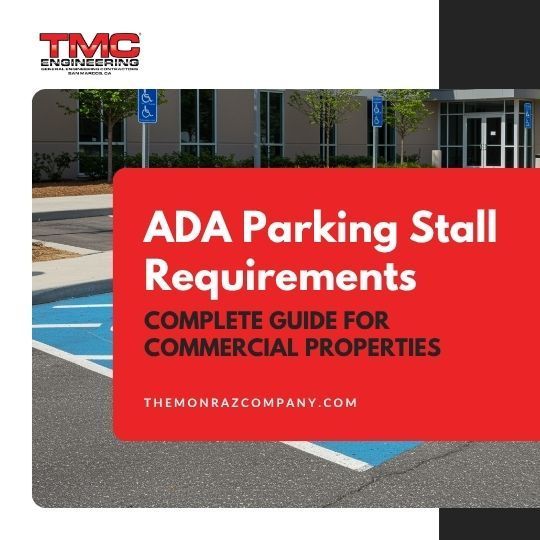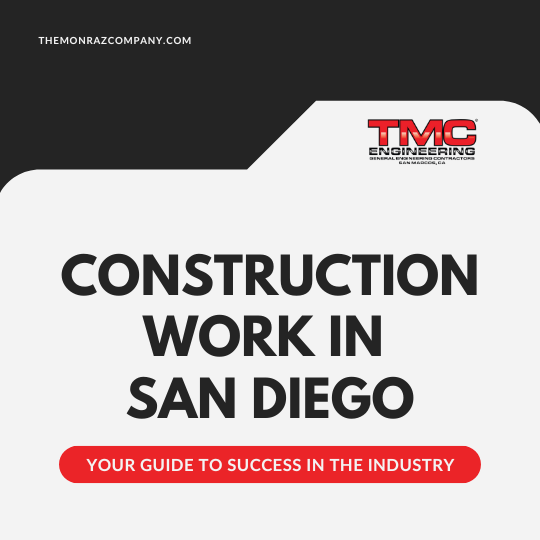How To Remove Epoxy From Concrete: A Comprehensive Guide
Epoxy is a versatile and robust polymer widely used for a variety of flooring applications for basements, garages, industrial buildings, and commercial properties. Though there are many benefits to using epoxy on these surfaces, there are plenty of reasons you may want to remove epoxy from your concrete floor.
One of the most common reasons for epoxy removal is application issues. If epoxy doesn’t cure properly due to improper mixing or other application errors, the surface can become sticky and unusable. Other reasons for removal include spills, excess application, wear damage, and design changes.
Whatever your reasoning, there are two processes that will get you the results you desire based on if the epoxy has cured or uncured. It’s essential that this process be done correctly, because improper removal could result in damage to your concrete base that would require additional repair. Today, we’ll give you our step-by-step guide to proper epoxy removal.
However, as we said, it’s important to do this job right! If you’d rather hire a professional and you’re in Southern California, call the experts at TMC Engineering ! We’d love to help you with epoxy application, epoxy removal, or any other concrete or asphalt project!
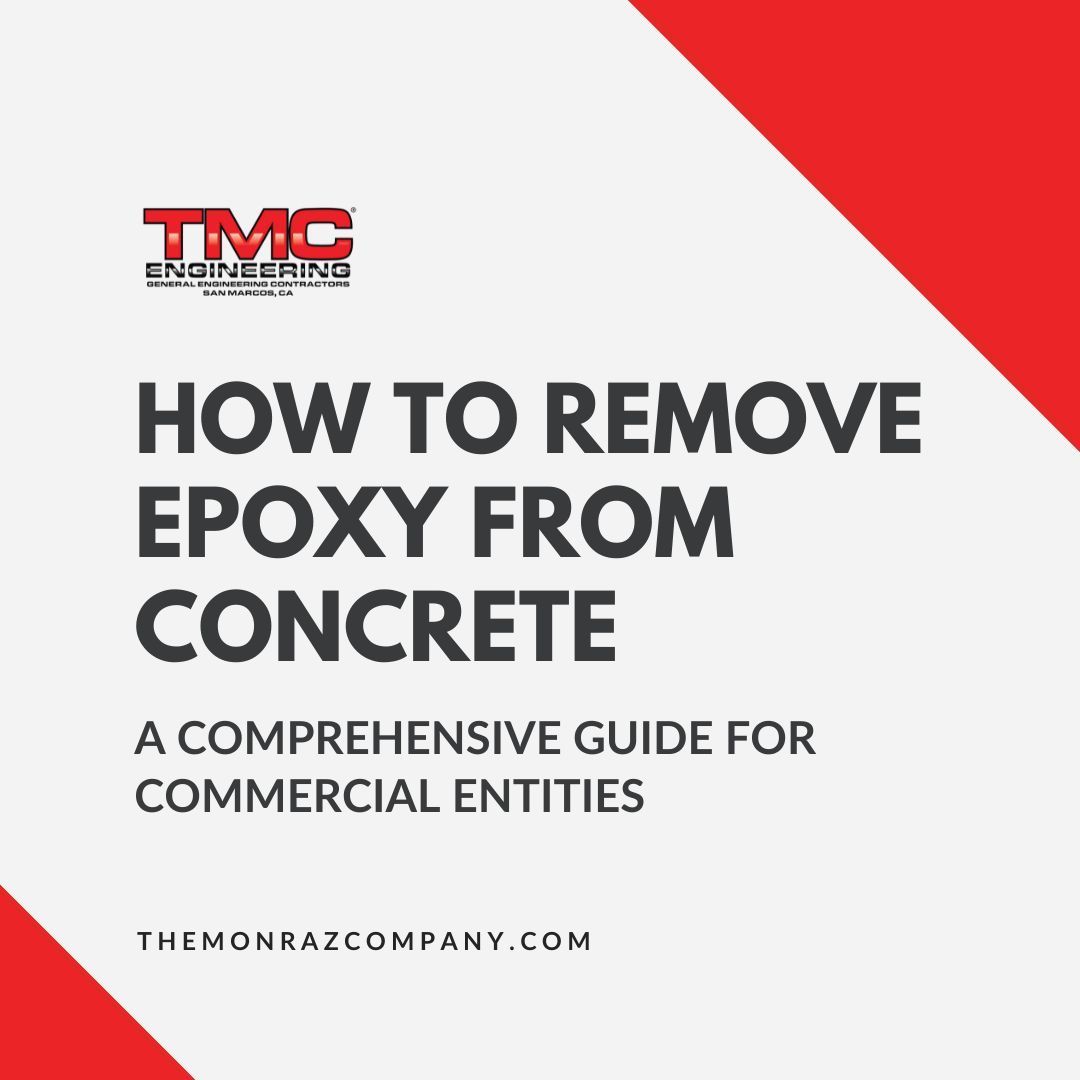
How To Remove Epoxy From Concrete
What is Epoxy and Why is It Difficult to Remove?
Epoxy hardens and sets very quickly and forms a very strong bond. This is why it’s a favorite product when finishing floors and other surfaces! However, those same characteristics are what makes removing epoxy so difficult.
As the epoxy polymerizes, a cross-linked structure is formed in which the molecule is set and transforms from liquid to a semi-liquid state and ultimately to a hardened state. Hence, the firmer and more rigid the cured epoxy becomes with time. This means uncured epoxy can easily be wiped away. However, hardened epoxy requires more technique and product to remove.
Additionally, while trying to strip the thin coating layer of epoxy , one has to be careful not to harm the underlying concrete layer. Using the wrong product or chemicals could result in damage to the surface, which would require more repair and a higher overall restoration cost.
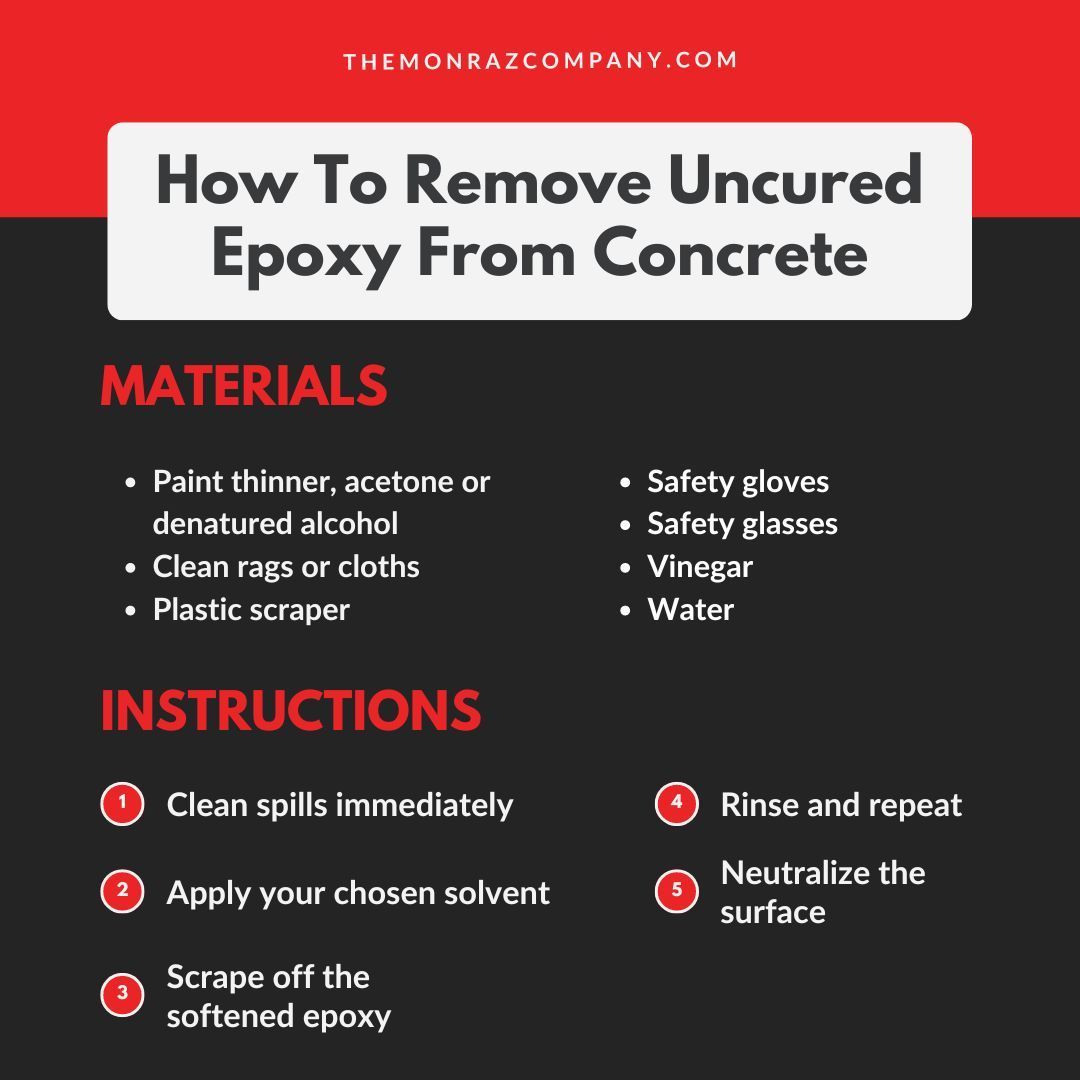
How To Remove Uncured Epoxy From Concrete
Materials:
- Paint thinner, acetone, or denatured alcohol
- Clean rags or cloths
- Plastic scraper
- Safety gloves
- Safety glasses
- Vinegar
- Water
Instructions:
- Clean spills immediately : Like we mentioned earlier, u ncured epoxy can be removed easily before it sets hard and becomes fully bonded to the surface. So clean off the epoxy stains on the surface as soon as possible using a cloth or piece of cloth.
- Apply your chosen solvent : Use your paint thinner, acetone, or any other preferred solvent to wet the affected area and wait for several minutes to soften the epoxy.
- Scrape off the softened epox y: Gently scrape off the epoxy using a plastic scraper on the concrete surface. Try not to use metal scrapers since they can dent and destroy your concrete flooring.
- Rinse and repeat : In case of build-up of debris, you can wash the area with clean water and repeat the process again.
- Neutralize the surfac e: After the epoxy has been scraped off, clean the next surface by dampening a clean cloth in a one-to-three ratio white vinegar water mixture. This will help in removing any traces of solvent.
How To Remove Cured Epoxy From Concrete
Materials:
- Heat gun or blow torch
- Paint scraper or putty knife
- Chemical stripper
- Safety gloves, eyewear, and respirator
- Drop cloths or plastic sheeting
- Sandpaper or grinder (optional)
- Vinegar
- Water
Instructions:
- Prepare the area : Cured epoxy stains require use of strong solvents and harsh equipment, so start by covering the surrounding areas with drop cloths or plastic sheeting to protect them from heat or chemicals. You must also be properly protected with the right safety gear, including gloves, eyewear, and a respirator.
- Heat the epoxy : Soften the epoxy with the heat gun or blow torch. You’ll want to heat it just enough to soften the epoxy, but not overheat the concrete and reduce the lifespan of your pavement.
- Scrape off the softened epoxy : Use a paint scraper or putty knife to carefully remove the softened epoxy from the concrete surface. Work in small sections to avoid problems with rapidly cooling epoxy.
- Apply the chemical stripper : If necessary, apply a chemical stripper specifically designed for epoxy removal to any remaining epoxy residue.
- Scrape and rinse : Scrape off the softened epoxy and rinse the area thoroughly with clean water.
- Sand or grind (optional): If any stubborn epoxy residue remains, you can sand or grind it off using a coarse sandpaper or grinder. Be careful not to damage the concrete surface.
- Neutralize the surface : Once the epoxy is removed, remember to neutralize the surface by wiping it down with a solution of one part white vinegar to three parts water. This will help remove any residual chemicals.
Important Note: When using chemical strippers, always follow the manufacturer’s instructions carefully and ensure proper ventilation. Chemical strippers can be very hazardous if they are not handled properly.
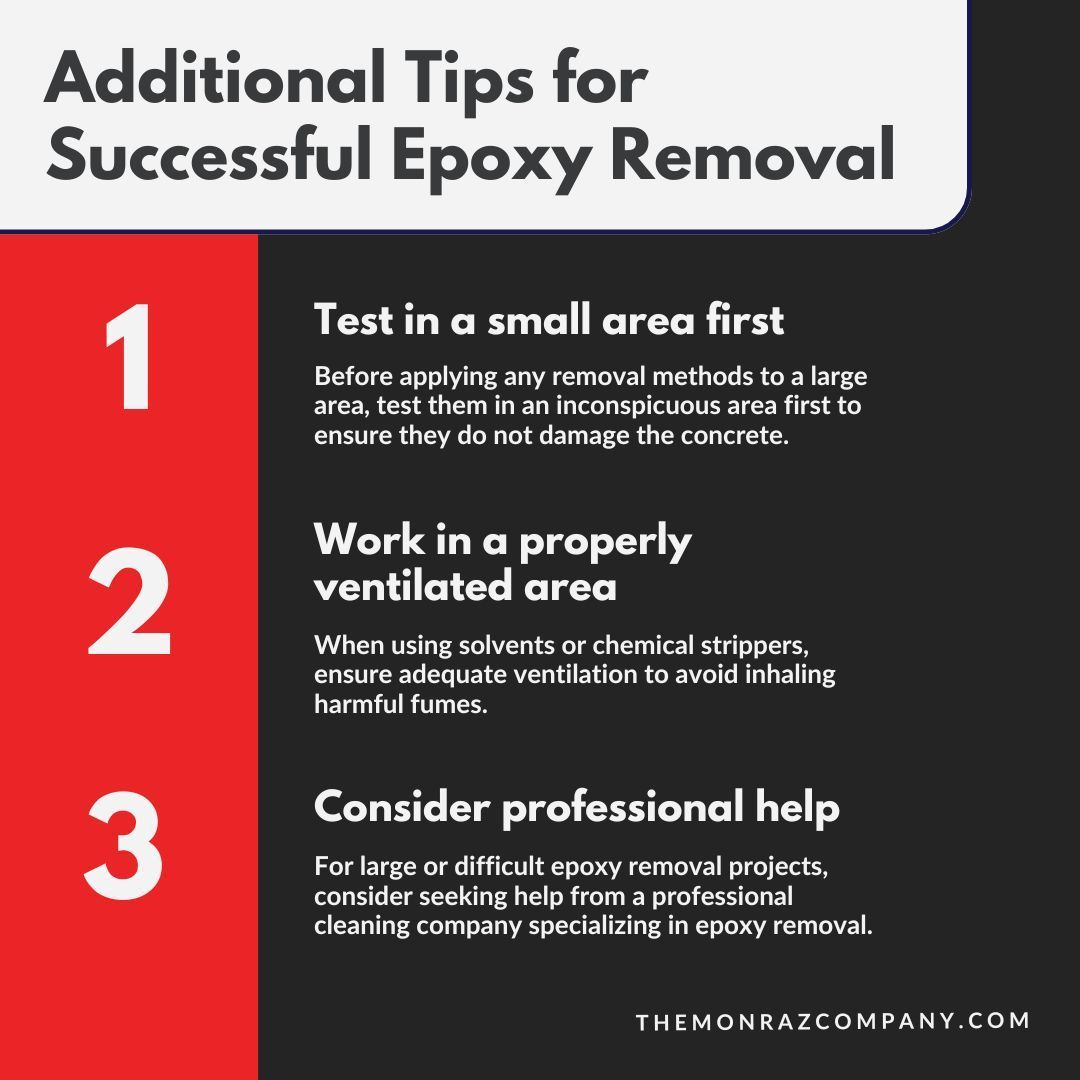
Additional Tips for Successful Epoxy Removal
- Test in a small area first : Before applying any removal methods to a large area, test them in an inconspicuous area first to ensure they do not damage the concrete.
- Work in a properly ventilated area : When using solvents or chemical strippers, ensure adequate ventilation to avoid inhaling harmful fumes.
- Consider professional help : For large or difficult epoxy removal projects, consider seeking help from a professional cleaning company specializing in epoxy removal.
At TMC Engineering , we have the expertise to remove cured and uncured epoxy from your concrete surfaces. Our professionals have the experience and technical know-how to ensure that the success of the removal process without damage to your concrete surfaces. Contact us to discuss solutions for your property!
With the right methods, removing cured and uncured epoxy residue from concrete is very achievable.
Removing epoxy from concrete floors requires a tailored approach based on the epoxy’s curing stage and the desired level of surface preservation. By following the detailed instructions and safety precautions outlined in this guide, you can effectively remove epoxy from your concrete surfaces while minimizing the risk of damage. Consequently, you’ll achieve a cleaner and more pristine surface, ready for any future projects or improvements. Remember, patience and careful execution are key to achieving a successful outcome.
For further tips on removing stubborn stains like tar from concrete, refer to our post on how to remove tar from concrete . This post provides valuable information on identifying tar stains, choosing the right removal method, and safely and effectively cleaning your concrete surface.
Our team of experienced paving professionals at TMC Engineering provides a wide range of transportation construction services to meet all of your project needs. Whether you need asphalt paving , striping, sealing , or concrete work completed, we have the expertise and equipment to handle the job efficiently and cost-effectively. By combining extensive industry knowledge with high-quality materials and workmanship, we can deliver durable, long-lasting results!
Contact us today to discuss your requirements and receive a customized proposal. We aim to forge strong partnerships through collaboration on quality-focused solutions!


